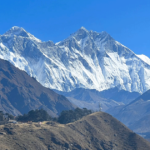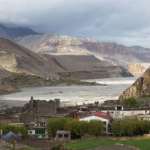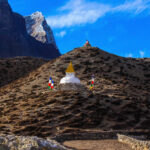Are you an adrenaline junkie who loves going on new adventures? One of the most life-changing experiences you can have on this earth is climbing Mt. Everest. Nestled along the border of Nepal and Tibet, this mountain is the tallest in the world and has become an international symbol of adventure and exploration. If you are planning a trip to this beautiful destination, using a service like Everest Base Camp Trek is essential. With the help of these professionals, you can plan out your trip and get the professional guidance needed as you make your way up this one of a kind mountain was best treks in Nepal. Below are some of the things you need to know about Mt. Everest:
The Actual Height Is Unknown
In 1856, Mt. Everest was originally measured to be nearly 29,002 feet. This measurement was kept for over a century, until it was measured again by surveyors. The survey that was done in 1956 measured this mountain to be around 29,029 feet. In 1999, a GPS reading at the summit of Everest measured it to be 29,035 feet above sea level. The government in both Nepal and China recognize the measurement of 29,029 to be the most accurate. There are plans to measure Mt. Everest in the near future to find out once and for all how tall it actually is.
Sherpas View The Mountain As A Sacred Shrine
The indigenous people who live around Mt. Everest view this natural wonder as sacred ground. Locals refer to the mountain as Chomolungma, which translates to “Mother Goddess of the World”. Many of them believe that a deity lives on the mountain. Before any of them will walk onto the mountain, they ask for permission from this deity in the form of a sacred ceremony called a puja. Any mountaineers who wish to climb the mountain must also participate in this ceremony. During this ceremony, visitors ask the Mother Goddess for protection, as they start their trek to the top of the mountain. This experience is one of the most memorable and something most people look forward to when Trekking in Nepal.
There Are Two Main Routes To The Summit
Most people fail to realize that there are only two main routes to the summit of this mountain. While there are a number of alternative routes, many locals advise against using them due to their deteriorating conditions. The most popular of these two routes is the through the South Col on the Nepali side of Everest. The second route to the summit of Everest is along the northeast ridge on the Tibetan side of the mountain. While the north side is not nearly as crowded, it is much more challenging than the southern path. The northern path has a series of technical rock climbs that must be made to get to the top of the mountain. If you are new to the world of mountain climbing, you probably want to stick with the more popular of the two routes.
It Is Not As Dangerous As You May Think
While this mountain has plenty of dangers, it is not nearly as deadly as movies and television shows have made it out to be. Only around 1.5% of all of the mountaineers that climb this natural wonder parish in the process. The K2 in Annapurna has a death rate of around 25%. When you put this into perspective, you will quickly realize that Everest is not as dangerous as you may have previously thought. The key to staying safe while climbing this mountain is working with the right professionals.
Choosing the right professionals to lead you up Mount Everest will require you to do a bit of research. Rushing through an important decision like this will usually lead to a variety of challenges.








I enjoyed a lot reading your amazing article about Everest Base Camp.Thanks for sharing it!
Pingback: 7 of the World's Easiest Mountains to Climb | My Beautiful Adventures
Awesome. It’s always better to prepare for the trek before going on the journey.